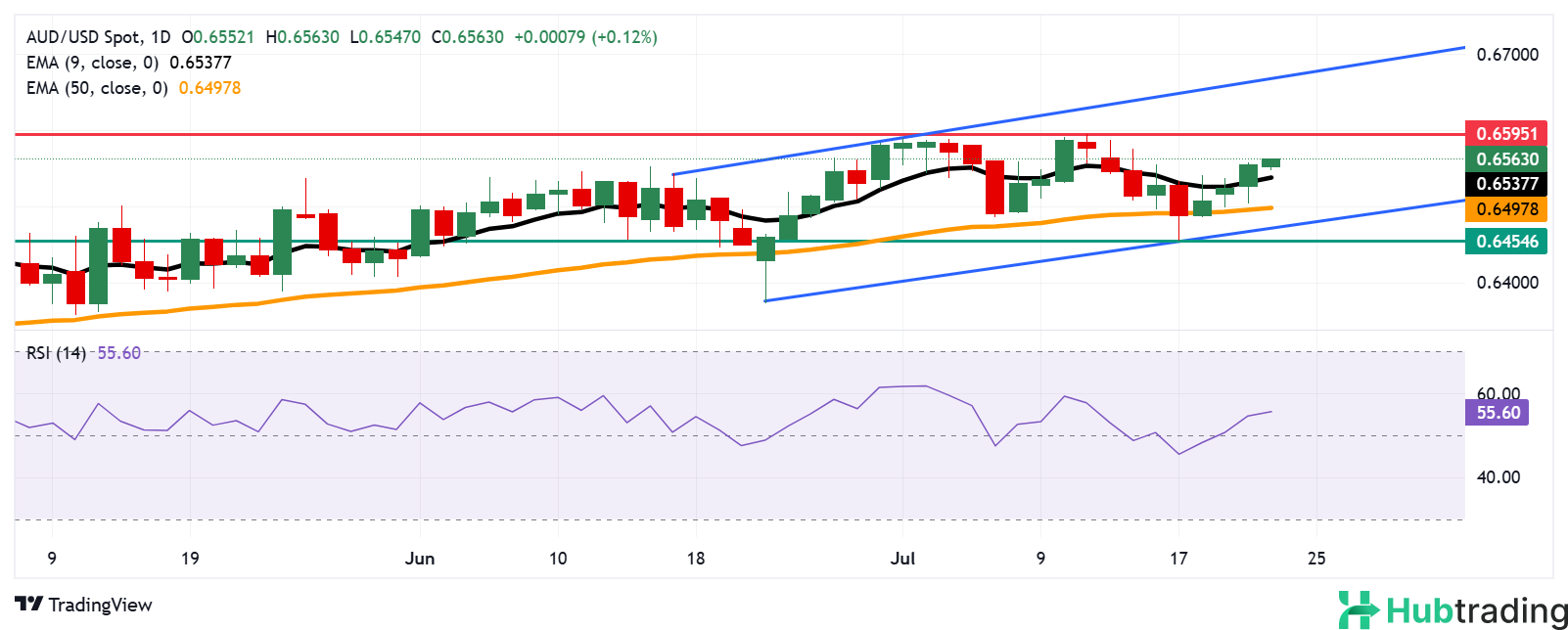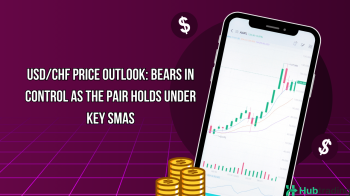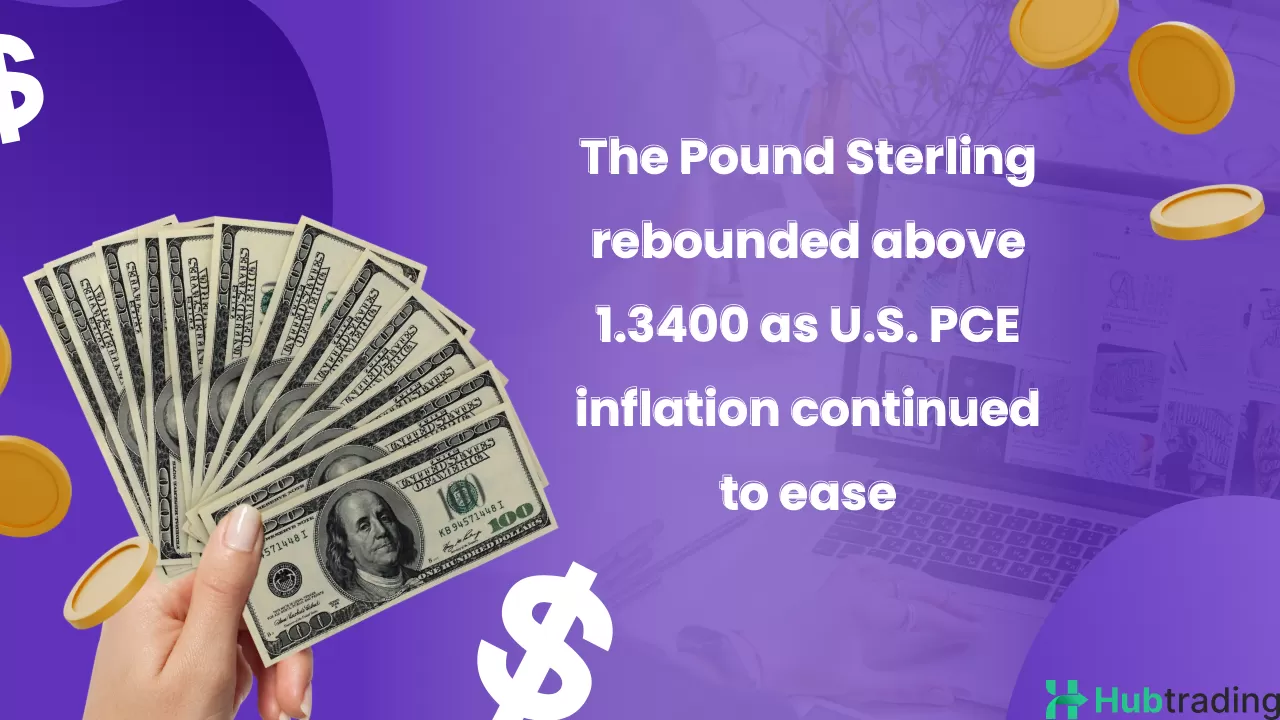-
The Australian Dollar gains ground as US–China trade talks show progress ahead of the August 12 deadline.
-
Australia’s Westpac Leading Index shows slower six-month annualised growth, easing to 0.03% in June from 0.11% in May.
-
President Trump unveils a trade deal with Japan, imposing a 15% tariff on Japanese exports to the US.
The Australian Dollar (AUD) continues to strengthen against the US Dollar (USD) on Wednesday, marking its fourth consecutive daily gain. The AUD/USD pair climbs to around 0.6560, driven by a combination of improved market sentiment and favorable technical signals. The rally is fueled by US President Donald Trump’s announcement of a significant trade deal with Japan, which includes a 15% tariff on Japanese exports and a $550 billion Japanese investment in the United States. This risk-on mood, coupled with growing optimism surrounding US-China trade talks ahead of the August 12 deadline, has supported the Aussie’s upward momentum.
On the domestic front, data from Westpac showed a continued deceleration in the six-month annualized growth rate of the Westpac-Melbourne Institute Leading Index, which eased to 0.03% in June from 0.11% in May. The decline reflects weakening momentum in the Australian economy, weighed down by softer commodity prices, falling sentiment, and reduced working hours.
Meanwhile, the Reserve Bank of Australia's (RBA) recent Meeting Minutes suggested that while further rate cuts remain on the table, policymakers prefer a cautious and gradual approach. The majority of board members agreed that awaiting confirmation of a sustained inflation slowdown would be prudent before making additional moves, especially after three cuts in four meetings.
US Dollar Pressured by Political Uncertainty and Mixed Fed Signals
- The US Dollar Index (DXY) extends its recent losses, trading near 97.50, as political developments and diverging Fed commentary create headwinds. President Trump has denied rumors about plans to remove Fed Chair Jerome Powell, despite speculation and a formal perjury accusation against Powell by Republican Congresswoman Anna Paulina Luna. At the same time, conflicting views from Federal Reserve officials continue to weigh on USD sentiment.
- Governor Adriana Kugler warned against premature rate cuts, citing inflation risks tied to Trump-era tariffs. San Francisco Fed President Mary Daly supported the idea of two cuts this year but emphasized the danger of waiting too long. In contrast, Fed Governor Christopher Waller advocated for an immediate rate cut in July to manage growing economic risks.
- On the data front, the University of Michigan’s preliminary Consumer Sentiment Index for July rose to 61.8, beating expectations and reflecting cautious optimism among US consumers. Market participants are also eyeing the upcoming US S&P Global PMI figures, which are expected to influence short-term sentiment and direction for the greenback.
- Adding to the risk environment, US Commerce Secretary Howard Lutnick confirmed that new tariffs will take effect on August 1, regardless of ongoing negotiations. Meanwhile, China's decision to keep its Loan Prime Rates (LPRs) unchanged signals policy stability, though any major shift in China’s economy could significantly impact the Australian Dollar, given the countries’ close trade ties.
- Chinese Commerce Minister Wang Wentao emphasized the enduring value of US-China trade relations, despite past tensions, highlighting recent international agreements that have helped stabilize economic ties.
AUD/USD Technical Analysis: Bullish Bias Remains Intact Above Key Support

Technically, the AUD/USD pair maintains a bullish structure as it trades above the nine-day Exponential Moving Average (EMA) and stays within a well-defined ascending channel on the daily chart. The 14-day Relative Strength Index (RSI) is positioned above 50, indicating ongoing positive momentum.
On the upside, immediate resistance is seen at the eight-month high of 0.6595, reached on July 11. A break above this level would strengthen the bullish outlook and expose the next target near the upper boundary of the ascending channel, around 0.6670.
Key support lies at the nine-day EMA at 0.6537, followed by the 50-day EMA at 0.6497. A decisive break below this zone could weaken the short- to medium-term outlook and push the pair lower toward the bottom of the ascending channel near 0.6470, with further downside risk toward the three-week low at 0.6454, recorded on July 17.





